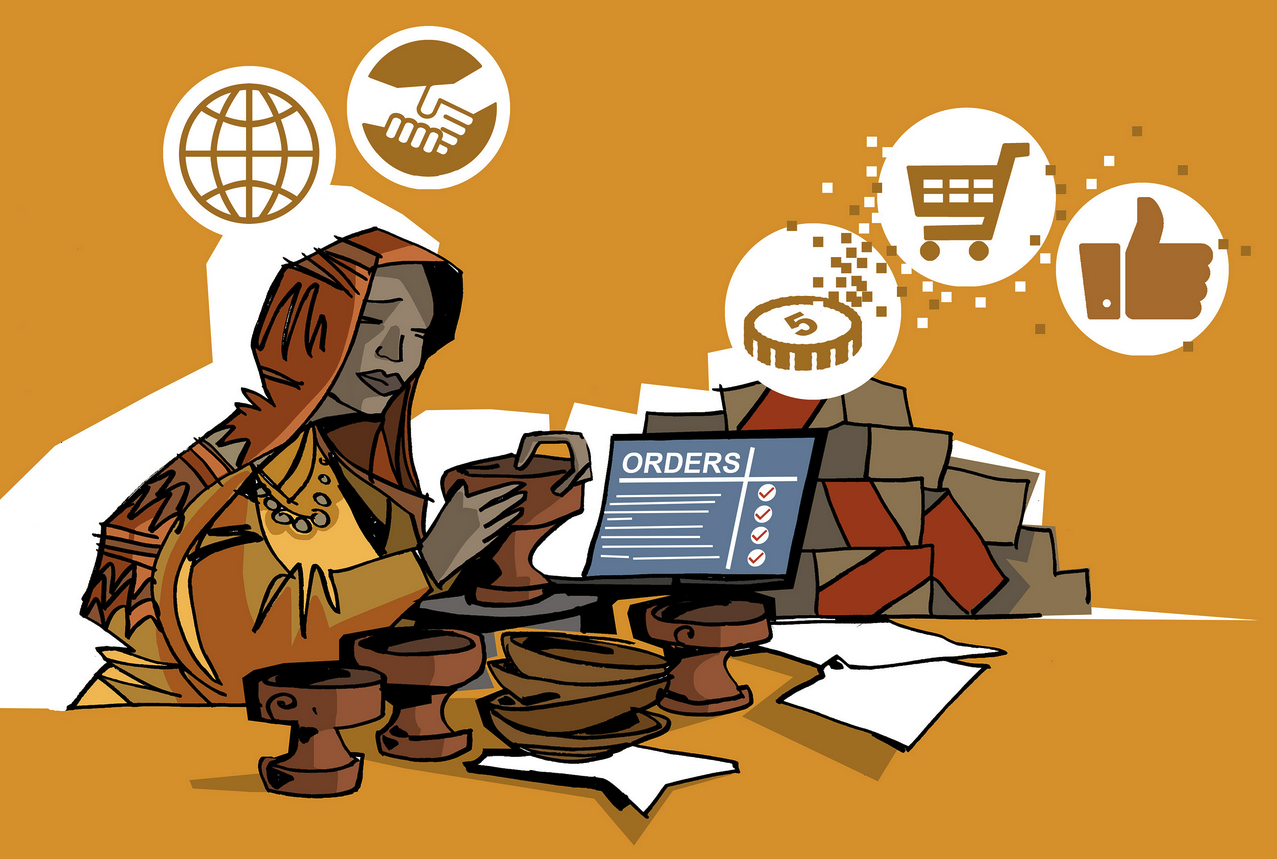How 5 Key Trends Could Shape African & Global E-commerce In 2023

It is no secret that over the past few years, the e-commerce industry has been constantly and rapidly evolving, with COVID-19 playing a significant role. Many retailers have experienced highs as a result of the pandemic, with consumers taking advantage of the convenience of shopping for pretty much anything right from the comfort of their living room; whilst others such as offline retailers suffered, due to their lack of a digital footprint when lockdown was introduced.
Judging by recent trends, global retail e-commerce sales will continue to soar in 2023, showcasing the adaptability of e-commerce, which has gone through tremendous change over the past 30 years.
As we look ahead to 2023, and the challenges e-commerce retailers have faced post-pandemic – from economic uncertainty to supply chain issues – it’s not all doom and gloom, as with great challenges come great opportunities.
Sue Azari, E-commerce Lead at AppsFlyer; a SaaS mobile marketing analytics and attribution platform, emphasises that the future looks particularly bright for e-commerce retailers that are placing customers at the forefront and creating better customer experiences, as well as staying on top of ever-evolving e-commerce trends.

E-Commerce Lead, AppsFlyer
In a communication sent to WT, Azari shares some insights on defining, notable e-commerce trends to look out for in 2023:
The rise and rise of Mobile Commerce
Mobile commerce has been on the rise within the e-commerce industry for some time now, thanks to the pandemic. According to AppsFlyer benchmark data, total mobile app installs on the African continent grew by 17 percent in the first part of 2022 compared to early 2021. As consumers are increasingly shopping for and purchasing products using mobile devices like phones and tablets, mobile commerce sales are expected to rise significantly in 2023, and beyond.
It is rapidly becoming the preferred channel for shopping, and we’re now seeing more traditional retailers join in the trend, prioritising mobile as an alternative channel for delivering exceptional customer experiences, for both new and existing customers. For the future, e-commerce retailers need to focus on mobile-first solutions such as mobile payment options like Apple and Google pay.
Omnichannel E-Commerce coming into play
After two years of predominantly online shopping, consumers are ready for in-store experiences again. Although mobile commerce is thriving more than ever, post-pandemic has seen a slight shift in consumers reverting back to offline shopping, with retailers now expanding their number of stores, and pure online retailers opening up physical pop stores. Many consumers have missed being able to physically go into a store and select an item. To reinforce this, the role of the store has changed, with retailers opting for more experiential and inspirational in-store experiences moving forward into the new year, Shoprite is a prime example of this, already implementing the use of AI in their South African stores, with the aim of enhancing the customer journey through the store.
A major challenge which arose with stores reopening post-pandemic was the convergence of online and offline experiences. Having said this, some retailers are taking the necessary measures to bridge that gap, and are finding ways to incorporate online into the in-store experience. As post-pandemic in-store shopping continues to grow, many brands have turned to the use of apps to enhance in-store shopping experiences. These apps are able to give in-store associates access to customer account details to provide better service and ensure in-store inventory is reflected in real-time online, all in a bid to create a more natural shopping experience online for customers. Brands are becoming increasingly reliant on more channels for customers to shop, and it is important they have good visibility across each channel.
The impact of Social Commerce
The astronomical growth of social commerce will undoubtedly continue in 2023. The global social commerce market is set to reach a whopping $604.5 billion by 2027. With social media attracting high engagement levels from a wide audience who typically spend almost 2.5 hours on these platforms per day, it makes it much easier for e-commerce retailers to capture and build closer connections with customers amidst the economic downturn.
Another advantage of social commerce is that it offers a frictionless journey between inspiration and purchase. Until very recently, consumers would have to seek out their inspiration on social media, and then head back to a website for purchase. Today, social media is now a one-stop shop, streamlining the experience and minimising the risk of drop-offs.
Re-commerce breaking through the clutter
Environmentally-friendly products can influence today’s consumer choices. As sustainability is increasingly becoming an essential factor in the consumer’s decision-making process, re-commerce will play a much bigger role when it comes to 2023 e-commerce trends. Consumers are now willing to spend more on sustainable products for health and fitness, and general environmental good, as taking care of the planet and environment is no longer just a marketing stunt or a nice-to-have.
It is paramount that e-commerce retailers take this into consideration in a way that will still be profitable to them. E-commerce retailers can gain a competitive edge in 2023 by choosing greener products and packaging and adopting more and more environmentally sound practices.
Personalisation key to brand loyalty
Today’s consumer demands a more personalised shopping experience from their favourite brands, therefore personalisation is expected to be a big trend in 2023. Most consumers crave a brand that knows them well enough to offer up personalised shopping experiences.
Personalisation works best when e-commerce retailers use the customer’s touch points and journey data to boost customer engagement and loyalty. This means engaging them on the channels they prefer and supporting them throughout their entire customer journey with personalised offers.
The latest e-commerce trends are adopting new technologies and unprecedented business practices, which in turn show that customer experience is heading towards being an always-on 2023 e-commerce trend. E-commerce retailers should look to adopt some of these trends in order to stay ahead of the competition next year, and beyond.
Featured Image Credits: Digital Watch Observatory